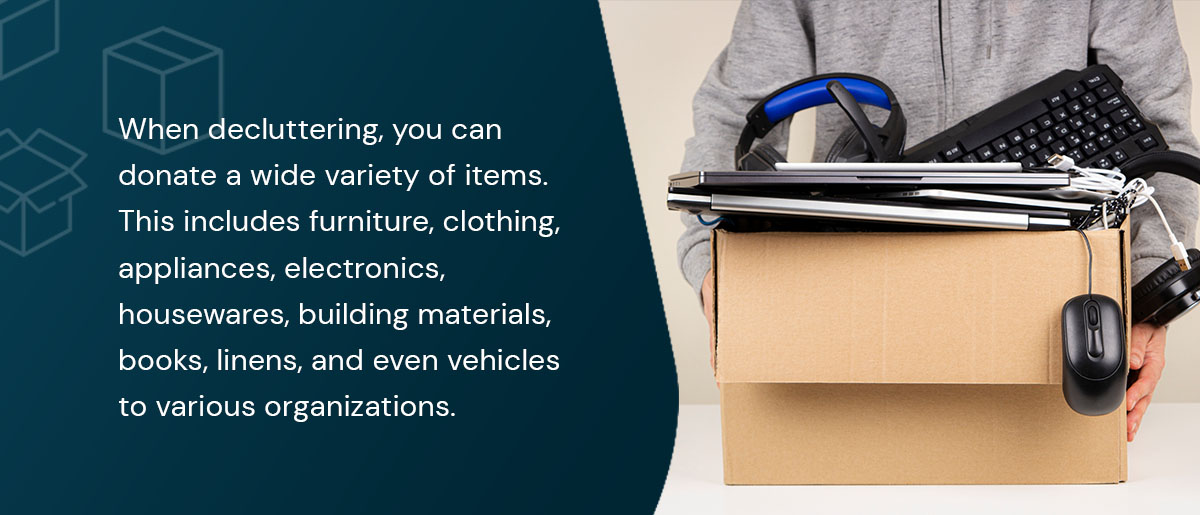
Decluttering helps streamline the moving process and allows you to start fresh in a new space. Giving back to local nonprofit groups during this time can bring a sense of fulfillment, make a positive impact on your community and decrease landfill waste.
As you sort through your possessions, consider donating to those in need. Household items, such as cutlery, furniture and clothing, can find a new home and serve a purpose for someone else.
Decluttering makes it easier to pack and unload fewer items. It also lets you take stock of possessions that you forgot about, so you don’t buy duplicates in the future. The benefits of a thorough pre-move purge extend far beyond simply having fewer boxes to load and unload:
To declutter successfully, explore these tips and strategies:
You can also use this checklist to simplify the process:
When decluttering, you might find items that you no longer use or that will not fit into the vision of your new home. Donating to nearby religious or philanthropic organizations directly assists individuals and families in your neighborhood.
Habitat ReStores are reuse stores by the local Habitat for Humanity organization that accept donations of furniture, appliances, housewares, building materials and more. Proceeds from the sales go toward building, rehabilitating and repairing affordable homes to support local housing projects. They generally accept the following:
Call ahead to schedule a pickup time if needed.
This nonprofit organization sells donated items in thrift stores and uses the revenue to fund job training and placement in the local community. Goodwill accepts clothing, housewares, electronics, small appliances, books and other items. With multiple locations throughout Toledo, you can find a center near you to drop off your items.
The Salvation Army in Toledo offers a range of community assistance services, including disaster relief and rehabilitation. Donated items are sold in thrift stores, and the revenue goes toward drug rehabilitation centers. They accept the following donations:
You can drop off your items at a Salvation Army center near you or schedule a free pickup online.

Looking to make a direct impact? These local charities in Toledo are always in need of specific items to support local families and individuals.
Cherry Street Mission provides shelter, meals and job training to people experiencing homelessness. Your donations help meet basic needs and offer hope to those working to rebuild their lives. Items they need most include:
Drop off the items at the Donation Warehouse at 1501 Monroe Street, Toledo, or call the mission for more information.
Family House accepts donations that go toward creating a comfortable environment for families and individuals experiencing homelessness. You can drop off your donations at 669 Indiana Ave. Items to donate include:
Call Family House or email them at info@familyhousetoledo.org to coordinate your donation.
ReDecor helps disadvantaged families and individuals furnish their homes through donations and community support. The items you donate must be in gently used condition and ready for use without repairs. They typically accept the following furniture and home goods:
Decluttering is the first step. When it’s time to move, you want a partner who treats your belongings with the utmost care. Some benefits of working with a professional moving company include:
Toledo has many places to donate your unwanted items, enriching the community and preventing them from ending up in a landfill. When you need professional assistance for your relocation, the experts at Corrigan Moving Systems can help make your move smooth and stress-free.
Contact Corrigan Moving Systems today for your free pre-move survey and discover how easy moving can be when you have the right team by your side.